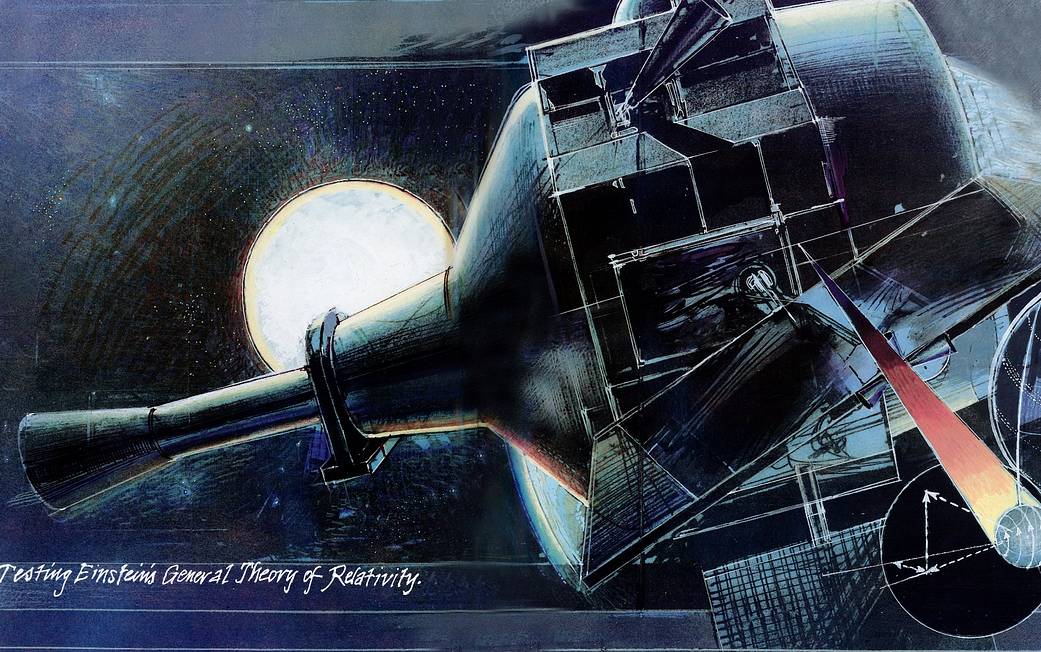通过艺术将爱因斯坦的概念带入生活
One of an artist’s most fundamental characteristics is a capacity to bridge the gap between imagination and illustration and bring even the most abstruse and metaphysical concepts to life. Scientists and engineers understand this process all too well as they strive to coax into existence new theories, experiments and technologies. A striking example of that process is the artist Barron Storey’s attempt in the late 1980s to bring the ideas of the Gravity Probe B team at Stanford University to the public. Learn more.
Launched on April 20, 2004, Gravity Probe B (GP-B) was a collaboration between Stanford University and NASA designed to test two previously untested aspects of Albert Einstein’s general theory of relativity (geodetic and frame-dragging effects) by observing the precession of four near perfectly spherical gyroscopes in reference to a distant star as the spacecraft traveled in a polar orbit 400 miles above the Earth. The story of GP-B spans almost five decades and includes both a wide body of technical and scientific innovation and a remarkable collaboration between physics and engineering.
This is but one of a series of images illustrating the scientific concepts. View the gallery.
Image Credit: Stanford University/Barron Storey
艺术家最基本的特征之一就是有能力在想象和插图之间架起一座桥梁,并将最深奥和形而上的概念赋予生命。科学家和工程师对这个过程非常了解,因为他们努力促成新的理论、实验和技术的存在。这一过程的一个显著例子是艺术家Barron Storey在20世纪80年代末试图将斯坦福大学重力探测器B组的想法带给公众。了解更多。
重力探测器B (GP-B)于2004年4月20日发射升空,由斯坦福大学和美国宇航局合作设计,旨在测试爱因斯坦广义相对论的两个未被验证的方面(大地测量和坐标系拖拽效应)。探测器在距地球400英里的极轨道上运行时,有四个接近完美球形的陀螺仪以远处的恒星为参考。GP-B的历史跨越了近五十年,既包括广泛的技术和科学创新,也包括物理学与工程学之间的卓越合作。
这只是说明科学概念的一系列图像之一。查看图库。
图片来源:Stanford University/Barron Storey


相对论没有尽头